Blog Archives
Silly Galahs but so pretty
When someone does something daft, Australians affectionately say, “Silly Galah!” That saying is a reference to these birds:

They’re Galahs, a type of cockatoo found across most of Australia. I saw these two on the outskirts of Lake Mungo in the Australian Outback. The one on the left is a male (brown eyes) and the one on the right is female (pink eyes).
The birds were looking particularly pretty, outlined by the early morning sun.
Galahs do sometimes behave in a way that people see as silly. And here is perhaps a case in point…
The day after seeing the birds at Lake Mungo, we were on the road again. Near Griffith in central New South Wales, a large flock of Galahs had for some reason taking a liking to the tarmac. Despite the oncoming vehicles, the birds kept wheeling around and landing on the road. We stopped, and drove slowly, careful not to collide with any of the birds.
Let’s finish off with another two Galahs, again looking pretty at Lake Mungo:
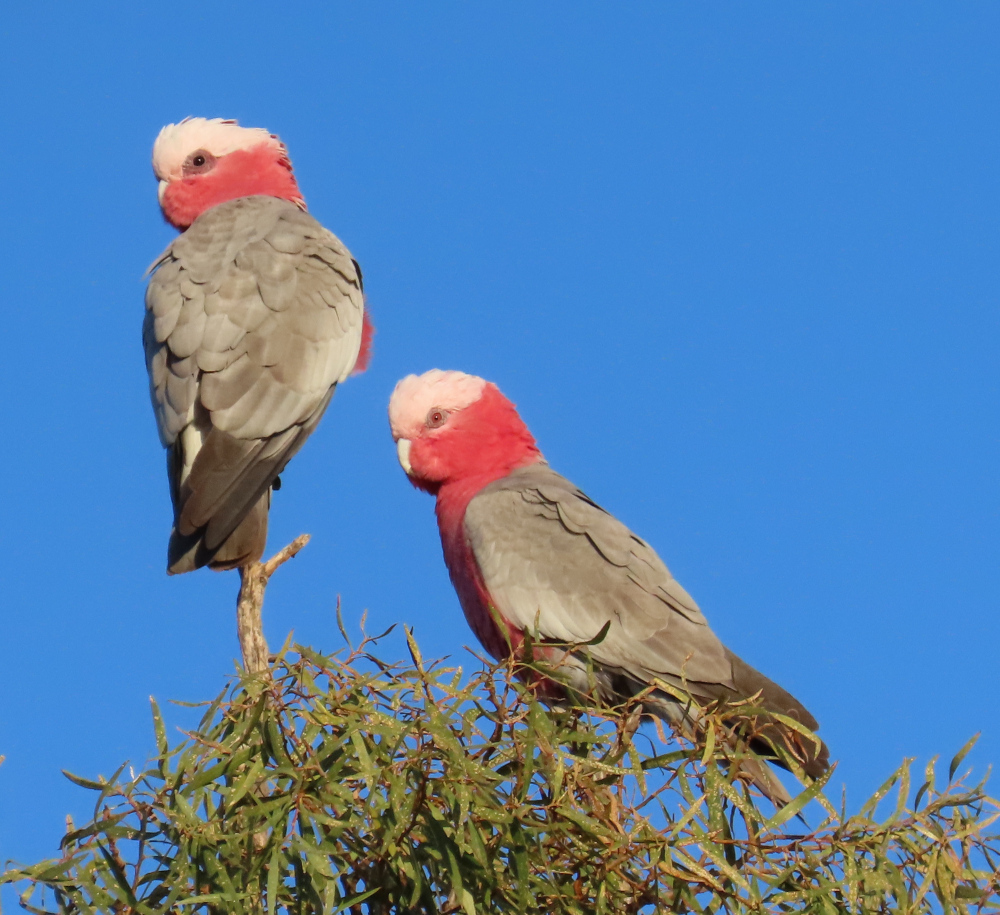
Common name: Galah
Scientific name: Cacatua roseicapilla
Approximate length: 35-38 cm
Date spotted: 20 May 2024 (autumn)
Location: Mungo Lodge, Mungo National Park, New South Wales, Australia: 33°44’31.4″S 143°00’06.1″E
A tree full of Pink Cockatoos at Lake Mungo
I came across a tree full of Pink Cockatoos at Mungo Lodge, on the outskirts of Lake Mungo in the Australian Outback. The alternative name for these birds is Major Mitchell’s Cockatoo and they were also previously known as Leadbeater’s Cockatoo.
Here’s a portrait of one of these spectacular birds:
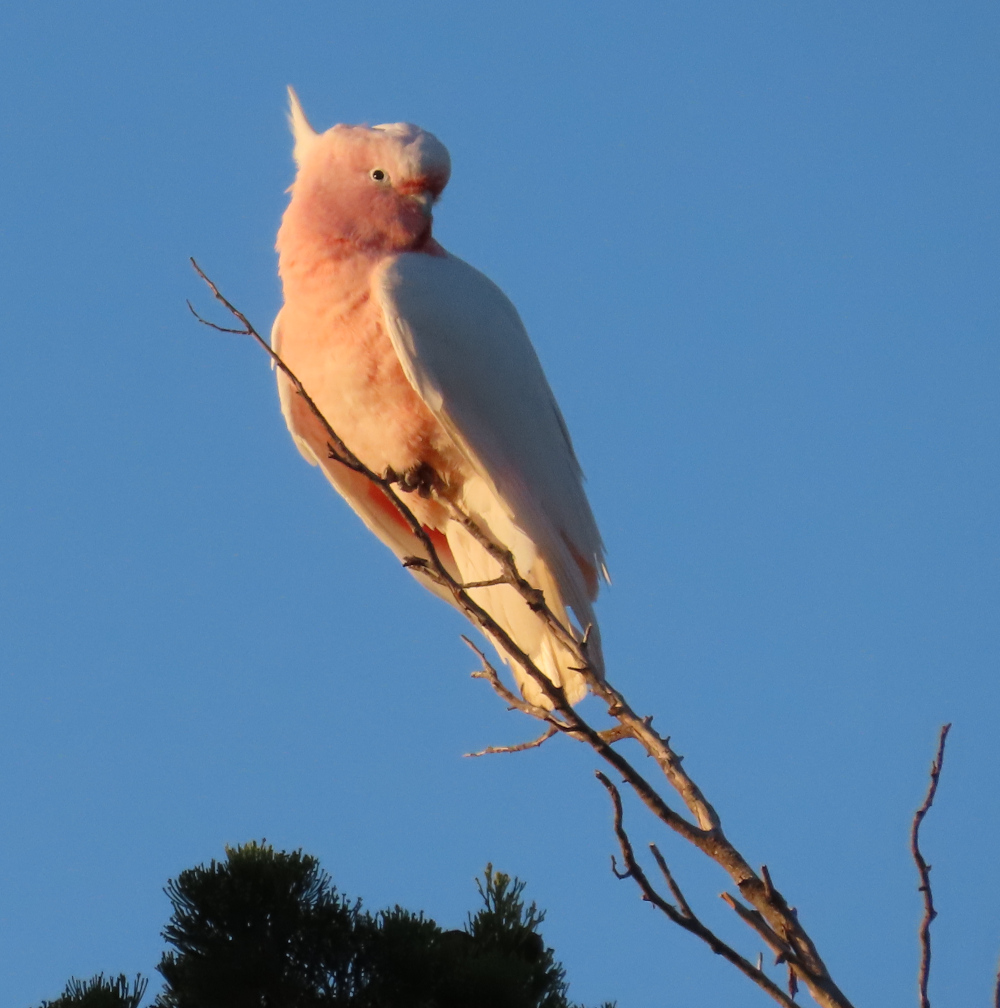
They’re gregarious and chatty birds. This video shows them in a quieter moment, enjoying the early sunlight at the top of a tree:
It was exciting to see these birds. Pink Cockatoos are uncommon, and are considered endangered. Here’s a still picture of part of the tree full of birds:
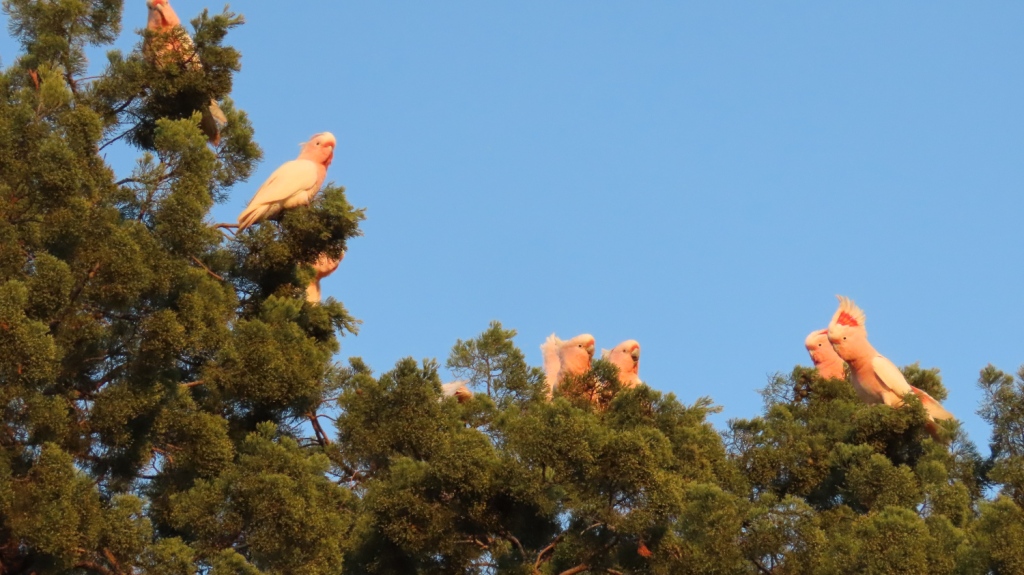
In September 2023, Birdlife Australia published an intention to change the common name of these birds from Major Mitchell’s to Pink Cockatoo, because Major Mitchell played a major part in the massacre of Aboriginal people in the 19th century.
It’d be a pity to taint the beauty of these birds with such a memory. The birds have a delicate beauty, the pink colour changing in the light from soft pink to quite dramatic colouring:
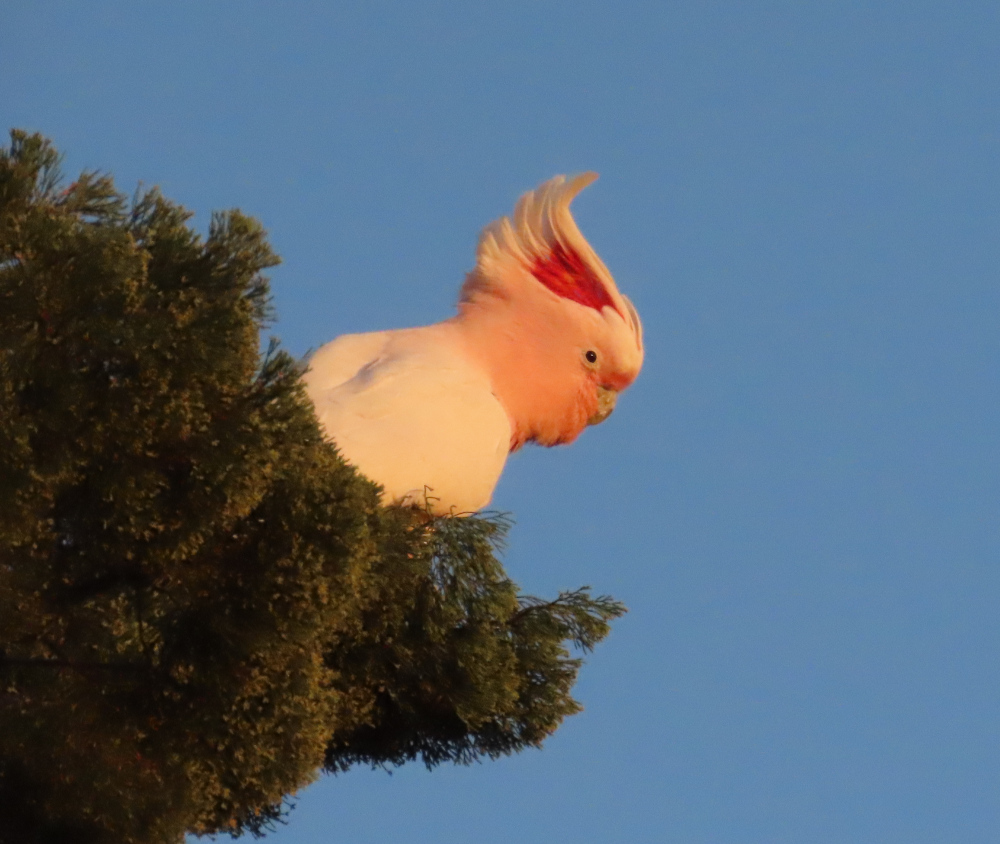
At 35-40 centimetres from head to tail, these birds are about the same size as a Galah. They’re smaller than the well-known Sulphur-crested Cockatoo (45-50 cm).
A final shot of a group of birds coming in to land:
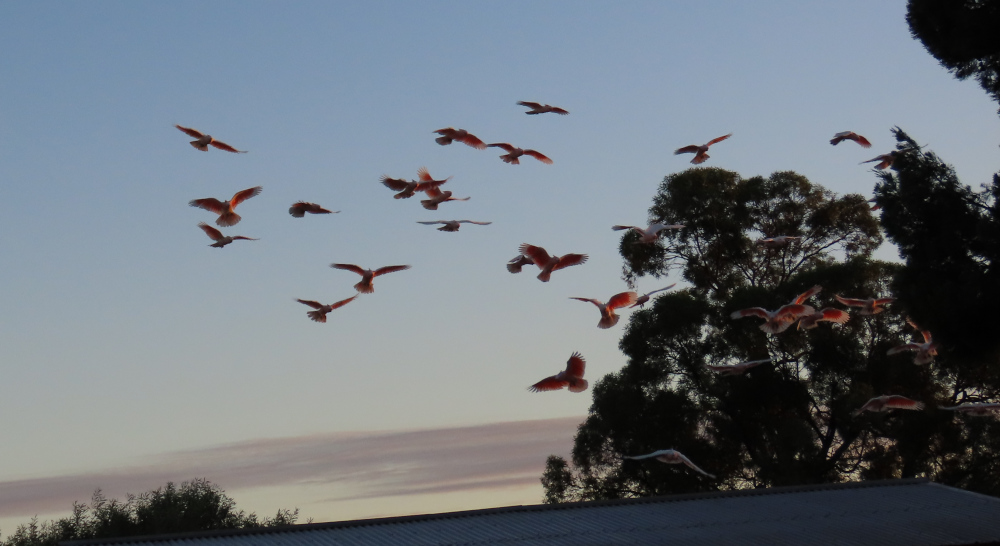
Common name: Pink Cockatoo (alternative name: Major Mitchell’s Cockatoo)
Scientific name: Cacatua leadbeateri
Approximate length: 35-40 cm
Date spotted: 20-21 May 2024 (autumn)
Location: Mungo Lodge, Mungo National Park, New South Wales, Australia: 33°44’31.4″S 143°00’06.1″E
Blue Bonnet: a new parrot for me
I love parrots, and it’s always exciting to see a new type. This is my first sighting of a Blue Bonnet. It was at Mungo Lodge, during our recent Outback trip.

Of course, as so often happens with birds, it was difficult to get a good shot. For the above photo, the bird turned its back. The next one is totally out of focus, but gives a good idea of the colouring around the bird’s face:

Common name: Blue Bonnet
Scientific name: Northiella haematogaster
Approximate length: 27-34 cm
Date spotted: 20 May 2024 (autumn)
Location: Mungo Lodge, Mungo National Park, New South Wales, Australia: 33°44’31.4″S 143°00’06.1″E
Zebra Finches at Lake Mungo
This is my first sighting of these pretty little birds. A male and a female Zebra Finch were flitting around a bush at Red Top lookout, near the Walls of China in Mungo National Park. The male is hidden behind the twigs on the left, while the female is more visible on the right of the photo.
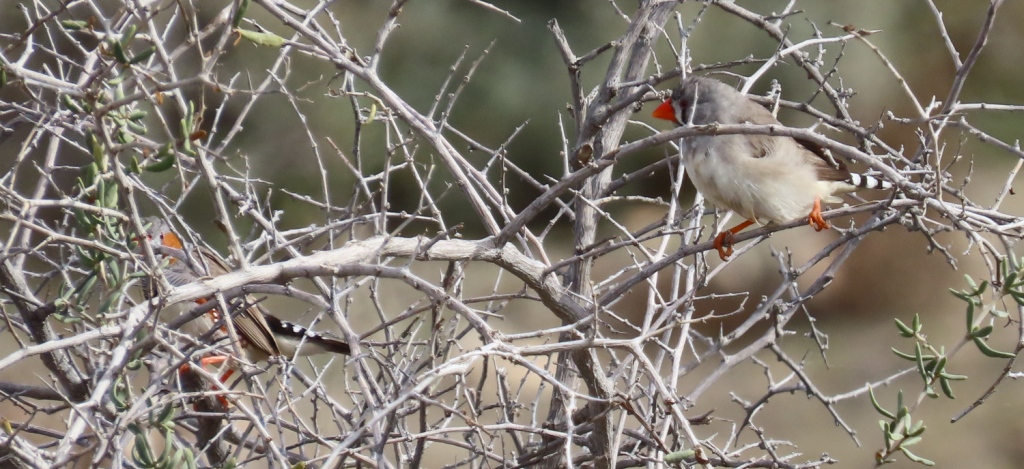
These birds like to hang around scrublands and salt marshes, but they also like to have water close by. I was surprised at how much water and greenery there was in the Outback areas that we visited. Lake Mungo itself is pretty much dried out (has been so for more than ten thousand years), but there were even puddles of water next to the sand dunes of the Walls of China.
Common name: Zebra Finch
Scientific name: Taeniopygia guttata
Approximate length: 10 cm
Date spotted: 20 May 2024 (autumn)
Location: Red Top lookout, Mungo National Park, New South Wales, Australia: 33°47’19.2″S 143°06’47.9″E
Apostlebirds nesting and grooming
It’s been a long-time wish of mine to see an Apostlebird. In our recent Outback trip, my wish came true. Several of these birds congregated around Mungo Lodge, where we stayed during our two-day exploration of Lake Mungo and surrounds.
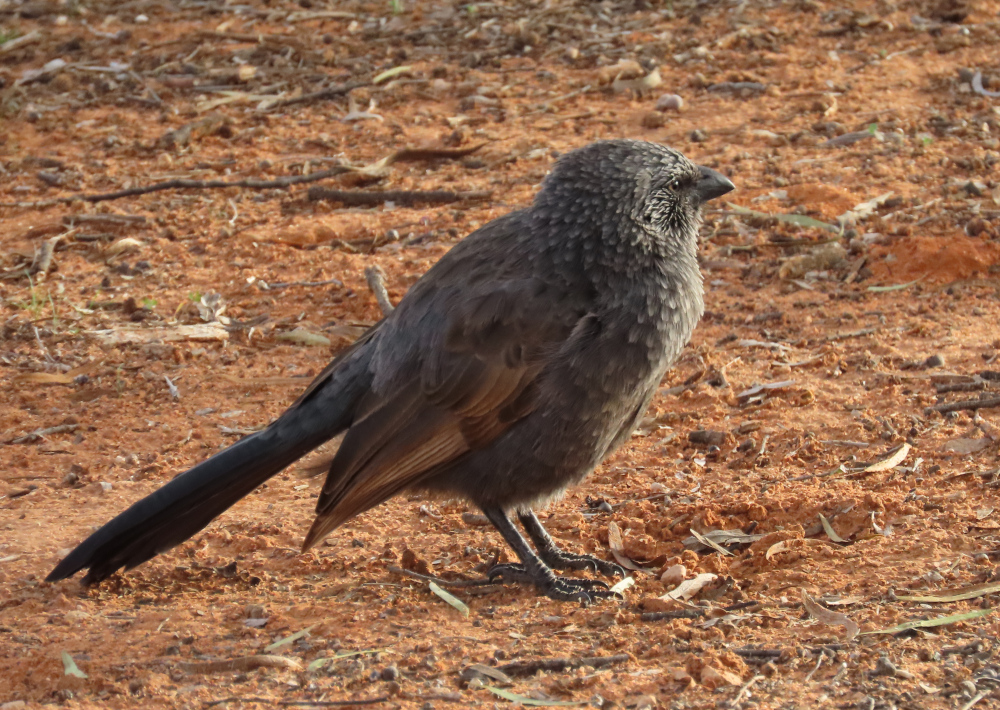
The birds have a characteristic dark mask around the eyes, which isn’t showing up as clearly as in some photos of these birds, because of the excellent mid-morning light. Here’s a half-profile shot, where you can just make out the mask leading from the beak and narrowly circling the eyes:

Two of the birds were nesting. I took the next shot in the early morning, when the sun was low in the sky. The photo shows one bird on the nest. Apostlebirds build their nests out of mud and clay. Since the soil is red in this area of the Outback, the nest is red too. It looks as if someone has put a round bowl in the tree, and the birds have hijacked it for a nest:

An early-morning grooming session was communal and chatty:
In the background sound of the above video, there’s a mournful falling whistle. This sound followed me around the area. I think it’s a Spiny-cheeked Honeyeater. I’ll blog about that bird soon.
The next video shows the two nesting birds again. It’s rather shaky and fuzzy, I’m afraid, due to my excitement and the poor light:
Common name: Apostlebird
Scientific name: Struthidea cinerea
Approximate length: 29-33 cm
Date spotted: 20-21 May 2024 (autumn)
Location: Mungo Lodge, Mungo National Park, New South Wales, Australia: 33°44’31.4″S 143°00’06.1″E
Australian Ringneck parrot at Cobar
First sightings are rolling in for me, thanks to my recent trip into the Australian Outback. We stopped for lunch at a town called Cobar in central New South Wales. A couple of Australian Ringneck parrots hid in the shade near our picnic place.
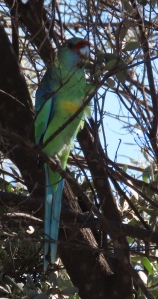
The shots are a little fuzzy, due to the lighting. Still, it’s worth sharing these shots as I’m unlikely to see these birds again for a while.
This particular variety of Australian Ringneck is called a Mallee Ringneck. The name “ringneck” comes from the narrow collar that this parrot shares with other varieties in the same species.

Common name: Australian Ringneck, subspecies Mallee Ringneck
Scientific name: Barnardius zonarius barnardi
Approximate length: 34-38 cm
Date spotted: 18 May 2024 (autumn)
Location: Cobar, New South Wales, Australia: 31°29’53.6″S 145°50’21.7″E
Spoonbill grabbing breakfast at Nyngan
A Yellow-billed Spoonbill fishes for breakfast on a cold and blustery morning. We were at the Nyngan Riverside Tourist Park, on the Bogan River in central New South Wales. This is where we’d spent the first night of our trip out west from Sydney, before heading further into the Outback.
It was a cold and blustery morning. After half an hour or so of filming birds, I was pleased to return to my cabin for a hot coffee!
I’ve seen a couple of Royal Spoonbills before, but this is my first Yellow-billed. It’s duller than the black-and-white Royal, with its pale beak and yellow legs:
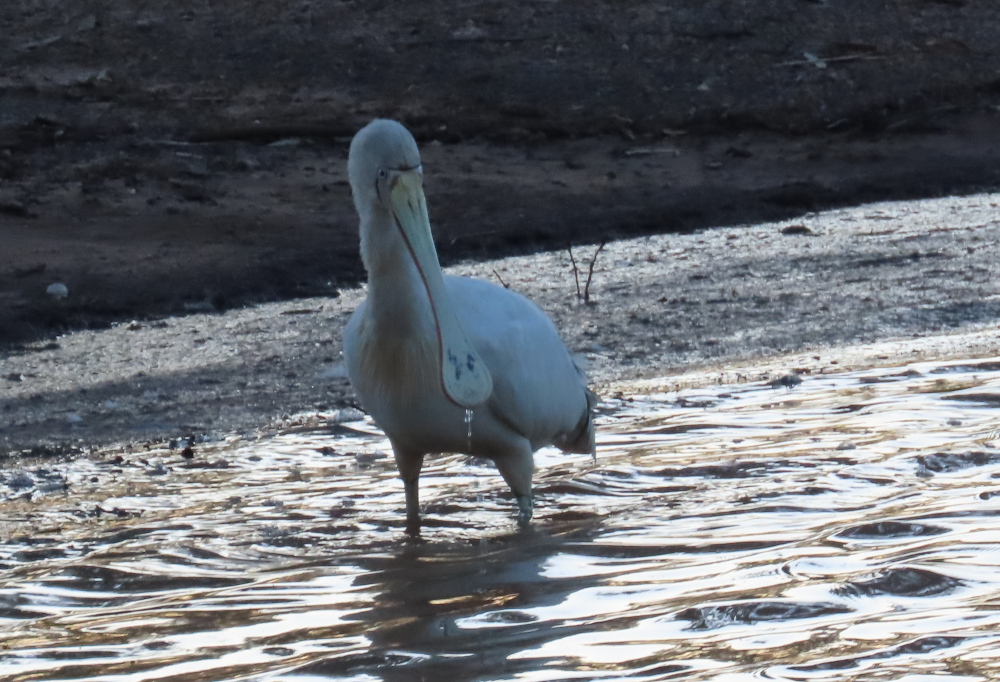
A side view shows the bird’s rather pretty tail:

If you’d like to know more about Nyngan and the Bogan Shire, take a look at my bookmark’s blog post.
Common name: Yellow-billed Spoonbill
Scientific name: Platalea flavipes
Approximate length: 75-90 cm
Date spotted: 18 May 2024 (autumn)
Location: Nyngan Riverside Tourist Park, New South Wales, Australia: 31°33’39.1″S 147°10’45.2″E
Emu
For the last five days, I’ve been travelling in the Outback regions of central New South Wales. It’s been very exciting to see all the birds out there. Stay tuned for some blog posts!
First up is the Emu. This one was in captivity at Mungo Lodge in Mungo National Park, which meant that I could see it from up close. It was pretty interested in me too:
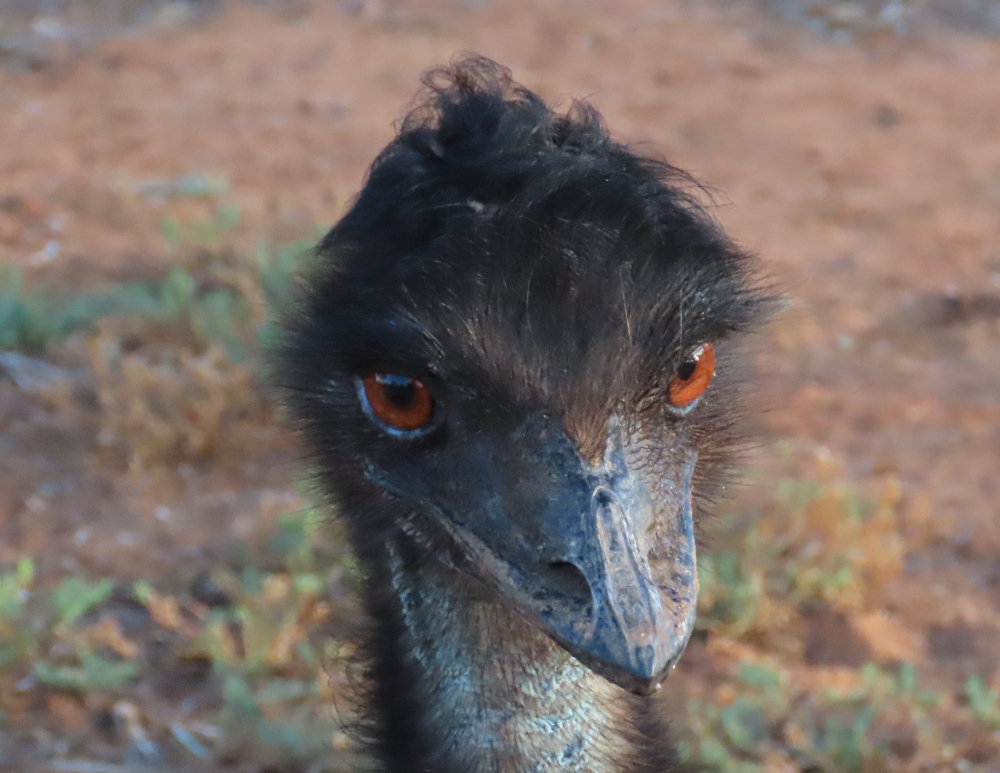
Emus are the second-largest bird in the world, and the largest Australian bird. They’re nearly 6 feet tall (ranging from 1.6 to 1.9 metres). Females weigh up to 37 kilograms, while the male is smaller (up to 32 kg).
These birds can run at a speed of 50 km per hour (30 miles per hour). We had proof of that when a bird charged out of the bush, ran behind one of the cars in our convoy, hugging the bumper so that the driver had no idea it was there, then spun around the car and dashed in front of it. Luckily, bird and driver avoided a collision.
We saw several groups of Emus throughout out trip. These were on the Barrier Highway, spotted while we were driving from Cobar to Wilcannia:
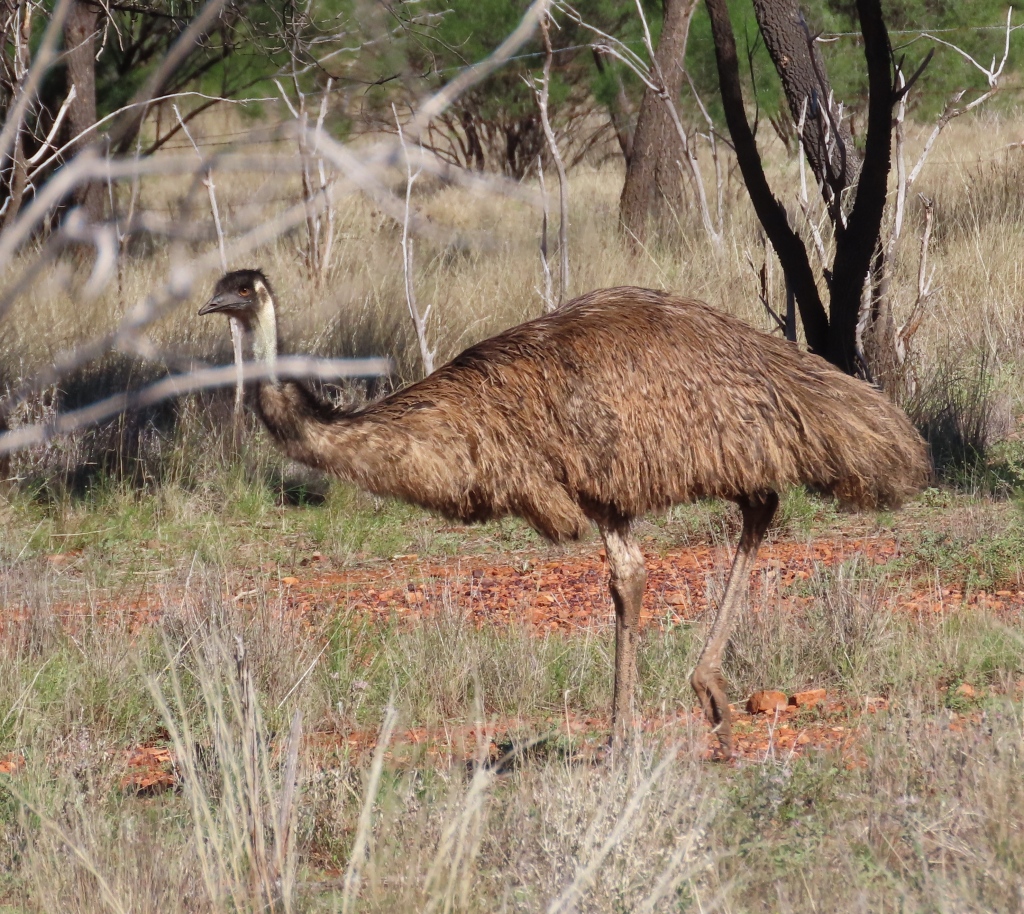
The above photo shows one of the bird’s tiny wings. It’s a stub really, pointing down next to the leg that’s in front in the picture.
This shot caught the bird in mid-blink:
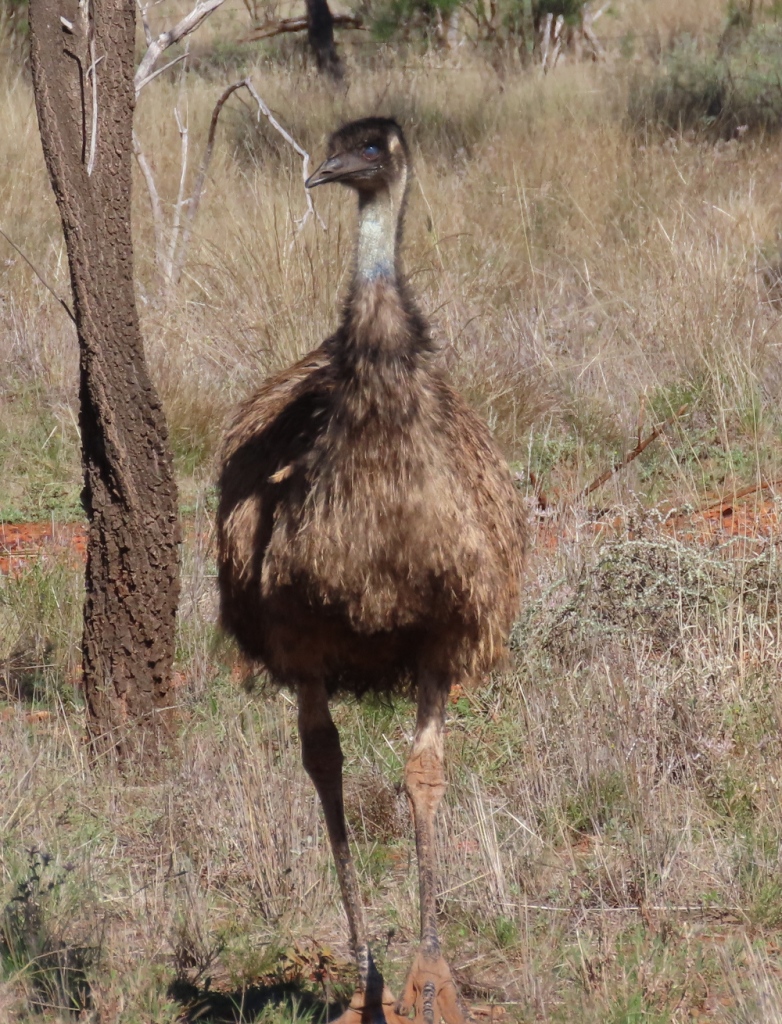
If you’re out walking, you might spot their tracks in the dirt:
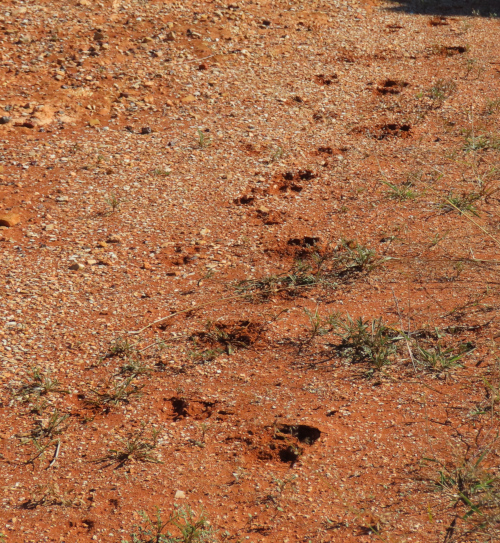
Let’s close with another close-up of an Emu at Mungo Lodge, showing its rather endearing coiffe:
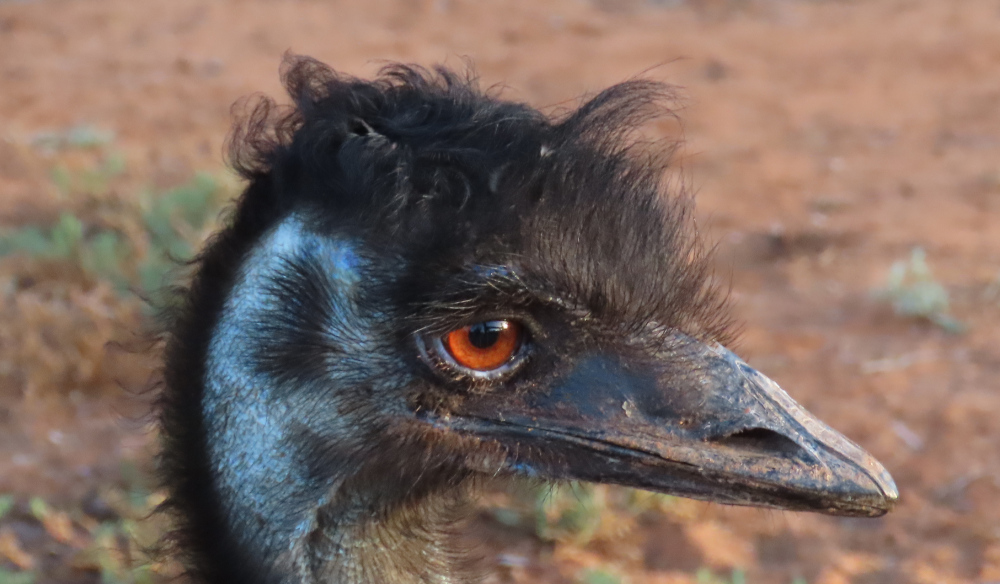
Common name: Emu
Scientific name: Dromaius novaehollandiae
Approximate height: 1.5 – 2 metres
Date spotted: 18 and 20 May 2024 (autumn)
Locations: Barrier Highway (approximate location on map) and Mungo National Park (map), New South Wales, Australia







